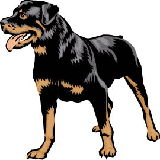Dog Parasite InformationDog Lice |
|
|
What is dog lice? Are they the same type of lice that affect humans? What is the most effective way of getting rid of dog lice? Sometimes even a clean, well-groomed dog can play a host to different types of unwanted guests. One of these unwanted visitors is called dog lice. Dog lice infestation is not common among dogs in this country, especially those that live in a clean environment and get proper care and attention. However, you should still be aware of their symptoms and know how to deal with the problem should it occur. Dog lice causes severe irritation and illness to your dog. In addition, dog lice carries disease and complications such as anemia. Dog lice are flat, gray, wingless parasites that are about a twelfth of an inch long. Dog lice are very slow movers. In fact, they hardly move at all. Dog lice only affect the dogs in your home and are not capable of surviving off of cats and humans. There are two types of dog lice that exist: The first type of dog lice concentrates on biting the skin and feeding on skin flakes; the other type of dog lice feed on your dog's blood. Blood sucking lice causes severe irritation because they penetrate the skin of your dog in order to feed. Signs that your dog is infected with dog lice are heavy, intense scratching, and irritation that often results in bald patches. Dog lice are usually found on the area around the ears, neck, shoulders, and anus. Although dog lice are relatively large, you are more likely to spot their eggs in your dog's hair. Lice eggs (nits) are easier to see because they are attached to the dog's hair and look like white tiny flakes of dust. Treating dog lice is relatively simple and easy due to the fact that they have not built up a resistance to insecticides. Your vet will more likely recommend an insecticide spray or bath to kill them. He may require you to cut off matted hair and wash your dog about once every week with the insecticide. This procedure is then repeated until the itching is gone and there are no more visible lice eggs. If you have a puppy that is infected with lice, consult your vet first before starting on any kind of pesticide treatment or other type of medication. To prevent further lice infestation and make sure that all the lice eggs have been completely eliminated, it is a wise idea to throw away all bedding that your dog has lain on during lice infestation and to disinfect the area where he sleeps. Back to the Dog Parasite Information page
| |
|
Related News About Dogs ' ); // get rid of newsfeed display by carp CarpConf('poweredby',''); CarpCacheShow('http://classifieds.agriscape.com/syndicate/dogs.rss'); ?>
|
|
|
|
|
|
Copyright © 2006-2007 dogguidance.com |



